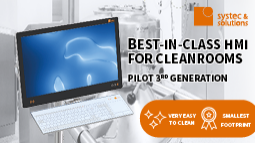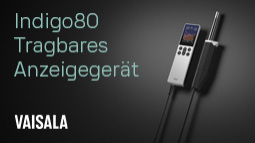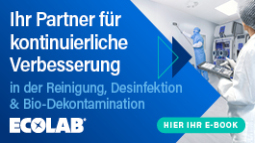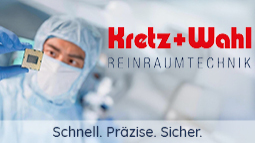The 12th COMPAMED Spring Convention was devoted to innovative implant technology - an important research field in medical technology.
Messe Düsseldorf and the IVAM Microtechnology Network hosted the 12th edition of the COMPAMED Spring Convention, offering a sneak preview of the trends at COMPAMED. With almost 800 exhibitors at last count, COMPAMED is the leading international specialist trade fair for medical technology suppliers, taking place annually in Düsseldorf. This year, COMPAMED takes place from 12 - 15 November 2018 (in parallel with the MEDICA). The Spring Convention had 45 participants from companies and institutions from eight different nations and was held on 3 May at the Airport Center Frankfurt, under the title “Implants in Medical Technology", and examined this topic in four areas: “Technology for Manufacturing Implants", “Packaging of Implants”, “Materials for Implants” and “Microtechnology in Medical Applications".
The significance that the global market for medical implants has taken on is indicated by the findings of the International Trade Administration and BCC Research: The market researchers value the sales volume at 30 to 60 billion Euro, of which active implants constitute around 15 billion Euro. “Active” here means any implant that is fitted with an energy source, which is generally a battery. However, other types of power supply, such as induction, are also possible.
"The new combinations of types of technology and the integration of electronics, smaller and smaller components, high frequency and wireless technology as well as monitoring, recording and control systems are market drivers for implants at the moment”, explained Dick Molin, the Medical Market Segment Manager for Specialty Coating Systems (SCS).
Active implants are some of the most technically tricky and risky medical products, and place very high requirements on the research, development, production and approval undertaken for them. Innovations must always be developed in consideration of patient safety, reliability throughout their entire lifetime, biological compatibility and biostability as well as compatibility with other medical technology devices.
Active implants: It all started with pacemakers...
The development of active implants began before 1958, when the first pacemaker was implanted at the Swedish Karolinska Institute. Since then, a huge range of devices for electric stimulation, improving hearing, delivering medication or for use as dental prostheses have become common. Orthopaedic implants for distraction osteogenesis among other things, implants for supporting cardiac function and various sensors which measure intracranial and intraocular pressure, bladder pressure or blood sugar levels are also devices of this nature.
Neuroprosthetics constitutes an important field for the application of active implants. In this sector, CorTec has developed a closed-loop system for measuring and stimulating brain activity for long-term use. “The driving premise behind our work is the realisation that these kinds of therapies need to be personalised” said Dr. Martin Schüttler, founder and CEO of CorTec. The Brain Interchange concept consists of three components: Electrodes for recording and stimulating the nervous system, a telemetric unit for optical communication with both the implant and the computer unit that evaluates the brain signals in real time in order to determine the level of stimulation that the patient requires at that point in time. CorTec manufactures the electrodes itself. They consist of five layers which are created using ultrashort pulse lasers and microfabrication methods. Consequently, the electrodes can be produced in any geometric shape (three dimensional or in a cuff design), with high contact density and for a wide variety of applications. CorTec thus manufactures both components and complete active systems.
Biodegradable materials for reabsorbable implants
Many implants need to have a lifespan that is as long as possible, but for others, it is important that they do not remain in the body long-term. At the IFAM (Fraunhofer Institute for Manufacturing Technology and Advanced Materials) in Dresden, a biodegradable magnesium implant with a fibrous structure has been developed as a solution for treating major bone defects. This serves as a guiding structure for the bone while it is growing, with this growth being particularly stimulated by the well-suited biomechanical properties of the implant. This structure also stimulates blood vessel growth simultaneously. The implant degrades as the healing process progresses. Up until now, major bone damage has mainly been treated by grafts taken from the patient’s own bones. This is, evidently, only possible to a limited extent. In addition, harvesting the graft, which generally comes from the iliac crest, harbours additional risks for the patients. Synthetic bone replacements represent an alternative here, but often these can only withstand little mechanical stress and are unsuitable as a result of the disruptions they cause in imaging in the long-term. Biodegradable materials therefore represent the ideal solution; they are used to create implants that disappear once the healing process has been successfully completed, such as the innovative magnesium implant from the Fraunhofer IFAM in Dresden, which was discussed at the COMPAMED Spring Convention. The starting point for technological development is the manufacturing of short magnesium fibres via extraction from the melt. These fibres are then homogeneously deposited and bonded to each other and densified via heat treatment. Implants manufactured in this manner have excellent mechanical properties and, most importantly, stellar corrosion properties, which are particularly well suited to the physiological feats required of them. In the animal model, slow corrosion was thus first measured after 12 weeks, and after 24 weeks the majority of the metallic component had disappeared. Osteosynthesis and cardiovascular stents are considered the most significant commercial applications for this technology.
“Sword catheters” for easy puncturing of blood vessels
Puncturing blood vessels is often a part of the daily routine in the medical sector. It also constitutes the first step for inserting catheters into vessels, which then in turn feed medication, perfusions and other elements into the patients, and is indispensable for all emergency cases that require blood transfusions. Generally, the Seldinger technique, which was published in 1953, is performed for opening larger blood vessels when puncture systems are used. This technique takes up a lot of time, space and uses a lot of material, and the doctor performing it also needs an assistant for standard cases. The Seldinger technique has many individual steps and the procedure can last up to approximately 30 minutes. With this in mind, Ebnet Medical has come up with a remarkable new development: the “SWORDCATH” is a puncture system that already contains all the necessary components and is packed in a user-friendly manner. “Our system uses a puncture technique that is new and can be learned intuitively. It also combines a small puncture needle with a large catheter”, reported Dr. Jens Ebnet, founder and CEO of his eponymous company. The new solution, which has now been registered for patents in many countries, enables the time for the procedure to be cut down significantly and for it to be completed by one person without additional assistance.
New materials, innovative procedures and the combined application of electronics and microsystem technology are not only typical for modern implants but are also fundamental main themes at COMPAMED. COMPAMED 2018, held from 12 - 15 November in Düsseldorf (alongside the world’s largest medical trade fair MEDICA), will not only tackle the latest developments in this field but will also present many other fields of research, such as digitalisation and miniaturisation in medical technology.
Messe Düsseldorf GmbH
40001 Düsseldorf
Germany











